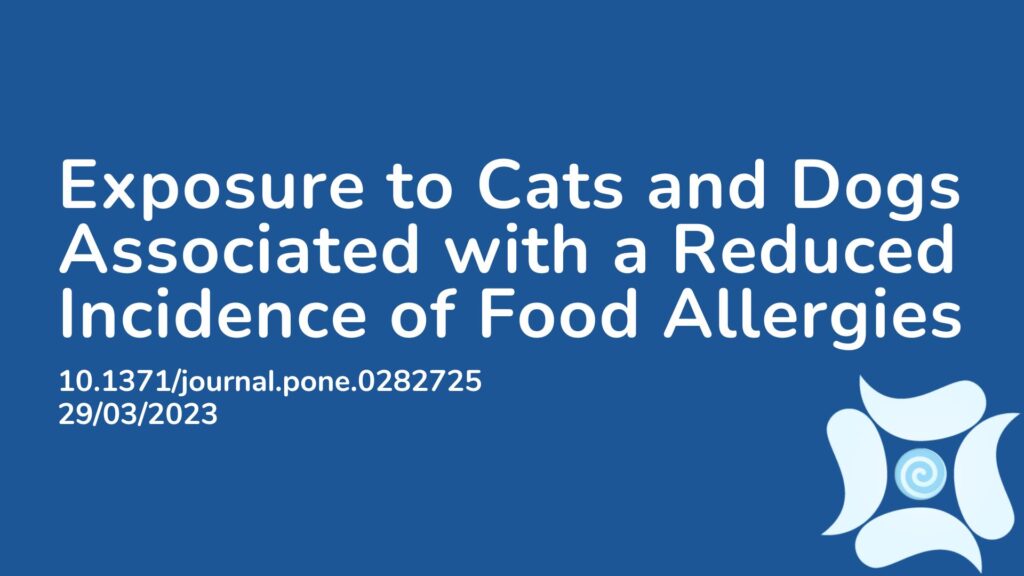Summary:
The aim of this study was to examine the relationship between exposure to various pets and food allergies. The authors analysed data from the Japan Environment and Children’s Study which was a prospective cohort study including 97,413 mothers and their children. During the fetal period, approximately 22% of participants were exposed to various species of pets. Of the children that were exposed to indoor cats and dogs, they noted a significant reduction in the incidence of food allergies. The results also showed that children exposed to indoor dogs had a reduced likelihood of experiencing dairy, egg and nut allergies and that children exposed to indoor cats were less likely to have egg, wheat, and soybean allergies. The authors concluded that although the association between pet exposure and food allergies differs depending on the pet, exposure to pets from fetal development reduces the risk of food allergies.
Abstract:
The hygiene hypothesis suggests that pet exposure is effective in preventing allergic disease, and some studies have reported the beneficial effects of dog exposure during fetal development or early infancy on food allergy. However, the effects of exposure to pets other than dogs on the kinds of food allergies remains unaddressed. This study aimed to explore the effect of exposure to various species of pets on the risk of food allergies. We obtained information on pet exposure and food allergy from the Japan Environment and Children’s Study, a nationwide, prospective birth cohort study that included 97,413 mothers and their children. We examined the associations between exposure to various species of pets during fetal development or early infancy and the incidence risk of food allergies. We conducted logistic regression analysis for each pet species, causative food, and timing of exposure. Exposure to dogs or cats during fetal development or early infancy was estimated to reduce the incidence risk of food allergies until the age of 3 years. Dog exposure was estimated to reduce the incidence risk of egg, milk, and nut allergies, and cat exposure was estimated to reduce the incidence risk of egg, wheat, and soybean allergies. However, hamster exposure was estimated to increase the incidence risk of nut allergy. In conclusion, the association between pet exposure and food allergies might differ depending on the pet species and causative food. Continued dog and cat exposure from fetal development to infancy was estimated to reduce the incidence risk of food allergies. The findings of this study shall aid in the design of future studies.
Article Publication Date: 29/03/2023
DOI: 10.1371/journal.pone.0282725



